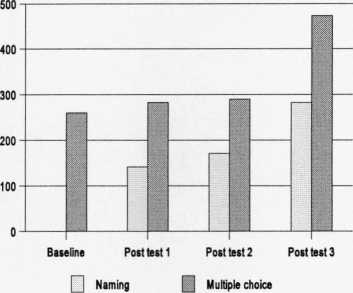Figure 7. 36 Total number of correct responses in the baseline and post tests naming
and multiple choice tasks

Statistical comparison revealed that all the children performed significantly better on the
post test naming than the baseline naming task for the target words (Friedman Two-Way
Anova: X2 = 125, df=3, p<.0000). The same pattern was found for each group separately:
[(Control group: Z=3.5, p<.0005); (Phonological control group: Z=4.01, p<.0005);
(Ostensive definition group: X2 =35.2, df=3, p<.0000); (Lexical contrast group:X2 =44.6,
df=3, p<.0000;(Definition group:X2 =47.2, df=3, p<.0000)].
Children also performed significantly better on the post test multiple choice than the baseline
multiple choice task for the target words (Friedman Two-Way Anova: X2 = 117, df=3,
p<.0000). The same pattern was found for each group [(Control Group Z=3.4, p<.0005);
(Phonological control group Z= 3.8, p<.0005); (Ostensive definition group X2 = 27.9, df=3,
p<.0000); (Lexical contrast group X2 = 43.4, df=3, p<.0000); (Definition group X2 = 47.2,
df=3, p<.0000)].
7.4.3.3 Is there any correlation between children’s performance on the multiple
choice and naming task ?
A series of bivariate correlations were carried out to investigate whether children’s
performance on the multiple choice task was correlated with their performance on the naming
task. The analysis demonstrated significant correlations between children’s performance on
the two tasks across testing except for post test 1 (see Appendix 7.8 for correlations).
285
More intriguing information
1. Factores de alteração da composição da Despesa Pública: o caso norte-americano2. The name is absent
3. Industrial Cores and Peripheries in Brazil
4. The name is absent
5. The name is absent
6. The name is absent
7. National urban policy responses in the European Union: Towards a European urban policy?
8. Ex post analysis of the regional impacts of major infrastructure: the Channel Tunnel 10 years on.
9. Spatial Aggregation and Weather Risk Management
10. Indirect Effects of Pesticide Regulation and the Food Quality Protection Act